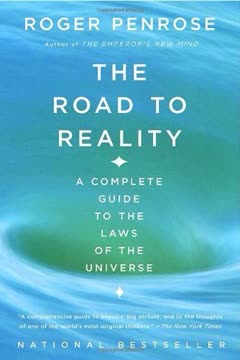Key Takeaways
1. Mathematics: The Language of Reality
We cannot get any deep understanding of the laws that govern the physical world without entering the world of mathematics.
Mathematics as a fundamental tool. Penrose argues that mathematics isn't just a human construct but a fundamental aspect of reality itself. To truly understand the universe, we must engage with its mathematical underpinnings. This isn't about mere calculation; it's about grasping the deep, inherent mathematical structures that govern physical phenomena.
Plato's world of forms. The book champions a Platonist view of mathematics, suggesting that mathematical truths exist independently of human minds. These truths are not simply inventions but discoveries, reflecting an objective reality that shapes the physical world. This perspective emphasizes the timeless and universal nature of mathematical principles.
Examples of mathematical influence. Penrose highlights successful achievements of 20th-century physics, such as Dirac’s equation for the electron, the general framework of quantum mechanics, and Einstein’s general relativity, as examples of how mathematical beauty, depth, and sophistication have driven progress in understanding the universe. These theories demonstrate the profound connection between abstract mathematical concepts and the behavior of the physical world.
2. Geometry Beyond Euclid: Expanding Our Spatial Understanding
The truly timeless nature of mathematics was beginning to be revealed.
Beyond Euclidean constraints. The book challenges the notion that Euclidean geometry is the only valid description of space. By exploring non-Euclidean geometries, such as hyperbolic geometry, Penrose reveals the limitations of our intuitive understanding of space and the need for more abstract mathematical frameworks.
Hyperbolic geometry's properties. Hyperbolic geometry, as illustrated by Escher's Circle Limit I, demonstrates a geometry where parallel lines diverge, and the angles of a triangle sum to less than 180 degrees. This challenges our everyday spatial intuition and highlights the diversity of possible geometric structures.
Physical implications. The exploration of different geometries has profound implications for our understanding of the universe. Einstein's general relativity, for example, utilizes non-Euclidean geometry to describe the curvature of spacetime caused by gravity, demonstrating the physical relevance of these abstract mathematical concepts.
3. Numbers: More Than Just Counting
What issue is this? It concerns the very way in which mathematicians can provide an existence to their mathematical entities and how such entities may relate to physical reality.
Beyond rational limitations. The book delves into the nature of numbers, moving beyond the simple integers and rational numbers to explore the real number system. This exploration reveals the limitations of rational numbers in describing physical reality and the necessity of irrational numbers for a complete understanding of geometry and physics.
The Pythagorean catastrophe. The discovery that the square root of 2 is irrational posed a significant challenge to the Pythagoreans, who believed that all of reality could be expressed in terms of whole numbers and their ratios. This realization forced them to confront the existence of numbers that could not be expressed in finite terms.
Real numbers and the physical world. Penrose emphasizes that real numbers, with their infinite decimal expansions, are essential for describing the continuous nature of physical quantities. While we may not directly experience real numbers in their entirety, they provide the mathematical framework for understanding concepts like distance, time, and energy.
4. Complex Numbers: Unveiling Hidden Dimensions
The magic is that the idea of a fraction actually works despite the fact that we do not really directly experience things in the physical world that are exactly quantified by fractions—pieces of pie leading only to approximations.
The magic of 'i'. The introduction of the imaginary unit 'i', the square root of -1, expands the number system to include complex numbers. This seemingly abstract concept unlocks a new level of mathematical power and reveals hidden connections within the physical world.
Solving the unsolvable. Complex numbers allow us to solve equations that are impossible to solve using only real numbers. This includes finding square roots of negative numbers and solving polynomial equations of any degree, demonstrating the completeness and elegance of the complex number system.
Complex numbers in physics. Penrose emphasizes the fundamental role of complex numbers in quantum mechanics, where they are essential for describing wavefunctions and quantum phenomena. This highlights the deep connection between abstract mathematical concepts and the behavior of the physical world at its tiniest scales.
5. Symmetry: The Universe's Guiding Principle
Amphos reasoned that we find order, after all, not in the patterns that scattered seeds form when they fall to the ground, but in the miraculous way that each of those seeds develops into a living plant having a superb structure, similar in great detail to one another.
Symmetry as a fundamental concept. Symmetry is not merely an aesthetic quality but a fundamental principle that governs the laws of physics. The book explores various types of symmetry, including spatial symmetries, time symmetry, and internal symmetries, and their implications for our understanding of the universe.
Groups of transformations. Symmetry is mathematically described by groups, which are sets of transformations that leave a system unchanged. These groups can be finite, like the symmetries of a square, or continuous, like the rotations of a sphere, each type having its own unique properties and applications.
Symmetry in physical laws. The book emphasizes that the laws of physics themselves exhibit symmetries, meaning that they remain the same under certain transformations. These symmetries, such as the conservation of energy, momentum, and angular momentum, provide powerful constraints on the behavior of physical systems.
6. Spacetime: A Unified Arena
Am-tep knew these patterns well, for he had a keen artist’s eye. Surely, he thought, those tiny candles of light in the sky should have been blown at least a little from their positions by the violence of that night, just as his pots had been smashed and his great urn shattered.
Beyond separate space and time. The book traces the evolution of our understanding of space and time, from the Aristotelian view of separate and absolute entities to Einstein's revolutionary concept of spacetime. This unification of space and time into a single, interconnected arena is a cornerstone of modern physics.
Minkowski's geometry. Minkowski spacetime, with its unique geometry and light cones, provides the framework for special relativity. This geometry challenges our intuitive notions of space and time, leading to phenomena like time dilation and length contraction.
General relativity and curved spacetime. Einstein's general relativity takes the concept of spacetime a step further by introducing curvature. Gravity is no longer seen as a force but as a manifestation of the curvature of spacetime caused by mass and energy, revolutionizing our understanding of the universe.
7. Quantum Mechanics: Probability and the Observer
According to this sage, one could not rely on the teachings and traditions of the past. To be certain of one’s beliefs, it was necessary to form precise conclusions by the use of unchallengeable reason.
Wave-particle duality. Quantum mechanics introduces the concept of wave-particle duality, where particles can exhibit wave-like behavior and waves can exhibit particle-like behavior. This challenges our classical understanding of matter and energy and requires a new mathematical framework to describe the behavior of quantum systems.
The role of the observer. Quantum mechanics raises profound questions about the role of the observer in shaping reality. The act of measurement is not a passive observation but an active intervention that affects the state of the quantum system, leading to the collapse of the wavefunction and the selection of a particular outcome.
Quantum entanglement. The book explores the phenomenon of quantum entanglement, where two or more particles become linked together in such a way that their fates are intertwined, regardless of the distance separating them. This challenges our classical notions of locality and causality and raises deep questions about the nature of reality.
8. Quantum Field Theory: Particles as Field Excitations
Penrose does much to reveal the beauty and subtlety that connects nature and the human imagination, demonstrating that the quest to understand the reality of our physical world, and the extent and limits of our mental capacities, is an awesome, never-ending journey rather than a one-way cul-de-sac.
From particles to fields. Quantum field theory (QFT) takes the principles of quantum mechanics and applies them to fields, such as the electromagnetic field and the gravitational field. In QFT, particles are no longer seen as fundamental entities but as excitations of these underlying fields.
Creation and annihilation. QFT introduces the concept of creation and annihilation operators, which allow particles to be created and destroyed, reflecting the dynamic and ever-changing nature of the quantum world. This challenges the classical notion of particles as permanent and indestructible objects.
Feynman diagrams. The book explores the use of Feynman diagrams in QFT, which provide a visual representation of particle interactions and allow physicists to calculate probabilities for various processes. These diagrams reveal the complex and interconnected nature of the quantum world, where particles can interact in multiple ways simultaneously.
9. The Big Bang and its Thermodynamic Legacy
Penrose does much to reveal the beauty and subtlety that connects nature and the human imagination, demonstrating that the quest to understand the reality of our physical world, and the extent and limits of our mental capacities, is an awesome, never-ending journey rather than a one-way cul-de-sac.
The universe's origin. The book delves into the Big Bang theory, the prevailing cosmological model for the origin of the universe. This model describes the universe as expanding from an extremely hot and dense state, with the expansion continuing to this day.
Thermodynamic implications. The Big Bang has profound implications for the thermodynamics of the universe. The book explores the concept of entropy and its role in the evolution of the universe, highlighting the fact that the universe started in a state of extremely low entropy and has been increasing in entropy ever since.
Black holes and cosmology. Penrose connects the Big Bang to black holes, suggesting that the singularities at the center of black holes may be related to the initial singularity of the Big Bang. This connection raises deep questions about the nature of spacetime and the ultimate fate of the universe.
10. The Measurement Paradox: Bridging Quantum and Classical Worlds
Science needs more people like Penrose, willing and able to point out the flaws in fashionable models from a position of authority and to signpost alternative roads to follow.
The clash of U and R. The book grapples with the measurement problem in quantum mechanics, which arises from the apparent conflict between the deterministic evolution of quantum states (U) and the probabilistic collapse of the wavefunction during measurement (R). This conflict challenges our understanding of how quantum mechanics relates to the classical world we experience.
Interpretational challenges. Penrose explores various interpretations of quantum mechanics, including the Copenhagen interpretation, many-worlds interpretation, and objective collapse theories, highlighting the strengths and weaknesses of each approach. He emphasizes the need for a deeper understanding of the measurement process and its implications for the nature of reality.
Gravity's potential role. Penrose proposes that gravity may play a crucial role in quantum state reduction, suggesting that the curvature of spacetime caused by mass may lead to the objective collapse of the wavefunction. This idea connects the quantum world to the classical world through the force of gravity, offering a potential resolution to the measurement problem.
Last updated:
FAQ
1. What is The Road to Reality: A Complete Guide to the Laws of the Universe by Roger Penrose about?
- Comprehensive physics overview: The book is a sweeping guide to the fundamental laws of the universe, covering topics from classical geometry and number systems to quantum gravity and twistor theory.
- Mathematics as a foundation: Penrose emphasizes the deep interplay between mathematics and physics, showing how mathematical structures underpin our understanding of physical reality.
- Philosophical exploration: The text also addresses philosophical questions about the nature of reality, the relationship between the physical, mental, and mathematical worlds, and the mysteries that connect them.
2. Why should I read The Road to Reality by Roger Penrose?
- Unique perspective on physics: Penrose offers a rigorous yet accessible journey through the foundations of physics, challenging conventional models and presenting alternative viewpoints.
- Bridges math and physics: The book is notable for its integration of advanced mathematics with physical intuition, making it valuable for readers interested in both disciplines.
- Explores deep mysteries: It tackles profound questions about the universe, consciousness, and the role of beauty and truth in science, appealing to those curious about the philosophical underpinnings of physics.
3. What are the key takeaways from The Road to Reality by Roger Penrose?
- Mathematical structures govern reality: The universe is described as being governed by precise mathematical laws, with complex numbers, geometry, and symmetry playing central roles.
- Limits of current theories: Penrose critically examines the limitations of quantum mechanics, general relativity, and modern unification attempts like string theory and loop quantum gravity.
- Need for new insights: The book argues that fundamentally new perspectives are required to resolve the deepest puzzles in physics, especially the measurement problem and quantum gravity.
4. What are the best quotes from The Road to Reality by Roger Penrose and what do they mean?
- On spin networks: “The idea was to build up all the required spatial notions simply from the network of spins and from the probabilities that arise... when two units are brought together to make a third.” This highlights Penrose’s approach to deriving space from quantum combinatorics.
- On twistor non-locality: “The twistor description of spacetime indeed turns out to be a non-local one; moreover, there is a fundamentally ‘holistic’ character to the twistor description of physical fields...” This emphasizes the departure from pointwise locality in favor of global complex structures.
- On mathematics and physics unity: “There is a deep unity between certain areas of mathematics and the workings of the physical world, this being the ‘first mystery’...” Penrose expresses his philosophical view on the mysterious effectiveness of mathematics in describing reality.
5. How does Roger Penrose in The Road to Reality explain the relationship between mathematics and physical reality?
- Platonic mathematical world: Penrose supports the view that mathematical entities exist objectively, independent of human minds, in a Platonic realm.
- Mathematics governs physics: He argues that the physical universe is governed by mathematical laws, and understanding these laws requires engaging deeply with mathematics.
- Three-world mystery: The book highlights the mysterious connections between the mathematical, physical, and mental worlds, questioning how they interact and give rise to our experience of reality.
6. What are the key mathematical concepts introduced in The Road to Reality by Roger Penrose?
- Number systems and their roles: The book covers natural numbers, rationals, reals, and complex numbers, explaining their definitions and physical relevance.
- Geometry and topology: Penrose explores Euclidean and non-Euclidean geometries, manifolds, and Riemann surfaces, showing their importance in both mathematics and physics.
- Calculus and complex analysis: Differentiation, integration, power series, and holomorphic functions are presented as foundational tools for understanding physical laws.
7. How does The Road to Reality by Roger Penrose explain the significance of complex numbers and holomorphic functions in physics?
- Fundamental in quantum theory: Complex numbers are essential in quantum mechanics, providing the structure for wavefunctions and probability amplitudes.
- Geometric and analytic power: Complex addition and multiplication correspond to geometric operations like rotation and scaling, making abstract algebra visually intuitive.
- Holomorphic functions’ magic: Holomorphic (complex differentiable) functions have unique properties that underpin much of modern physics, including the representation of wave phenomena and quantum fields.
8. What is the role of geometry, especially non-Euclidean geometry and the Riemann sphere, in The Road to Reality?
- Foundations of space and physics: The book discusses the Pythagorean theorem, Euclidean and non-Euclidean geometries, and their implications for the universe’s large-scale structure.
- Riemann surfaces and sphere: Riemann surfaces handle multi-valued functions, while the Riemann sphere compactifies the complex plane, providing a natural setting for conformal mappings and quantum theory.
- Physical applications: These geometric concepts are crucial in relativity, quantum mechanics, and advanced theories like twistor theory.
9. How does Roger Penrose in The Road to Reality describe quantum mechanics, wavefunctions, and the measurement problem?
- Wavefunction as reality: Penrose treats the wavefunction as representing quantum reality itself, not just a probability tool.
- Wave-particle duality: Experiments like the two-slit setup illustrate the holistic, non-local nature of quantum states.
- Measurement paradox: The book discusses the conflict between unitary evolution (Schrödinger equation) and the non-linear, probabilistic collapse during measurement, highlighting unresolved foundational issues.
10. What is quantum entanglement and non-locality according to The Road to Reality by Roger Penrose?
- Holistic multi-particle states: Entangled states cannot be decomposed into individual particle states, reflecting the non-separability of quantum systems.
- Violation of local realism: Experiments violating Bell inequalities demonstrate that quantum mechanics cannot be explained by local hidden variables.
- Quantum information phenomena: Concepts like “quanglement” and quantum teleportation showcase the unique, non-classical correlations enabled by entanglement.
11. How does The Road to Reality by Roger Penrose address quantum field theory, black holes, and the arrow of time?
- Quantum field theory foundations: The book explains creation and annihilation operators, infinite-dimensional algebras, and the role of the vacuum state in QFT.
- Black hole entropy and thermodynamics: Penrose discusses the Bekenstein–Hawking entropy, black hole temperature, and their implications for the universe’s entropy and the arrow of time.
- Special initial conditions: The extraordinarily low-entropy state of the Big Bang is highlighted as crucial for understanding the thermodynamic arrow and the evolution of the universe.
12. What are spin networks, twistor theory, and loop quantum gravity in The Road to Reality by Roger Penrose?
- Spin networks: These are combinatorial structures built from quantum spins, providing a discrete, quantum description of space and underpinning loop quantum gravity.
- Twistor theory: Twistors reframe spacetime in terms of light rays and complex geometry, offering a non-local, holistic approach to unifying quantum mechanics and gravity.
- Loop quantum gravity: This approach quantizes geometry using loops and spin networks, introducing discreteness in spacetime but facing challenges like the problem of time and state reduction.
- Ongoing quest for unification: Penrose emphasizes that while these theories offer deep insights, a complete and experimentally verified unification of quantum mechanics and gravity remains elusive.
Review Summary
The Road to Reality is a comprehensive and ambitious book on physics and mathematics. Reviewers praise its depth and breadth, covering topics from basic arithmetic to advanced theoretical physics. Many find it challenging but rewarding, appreciating Penrose's clear explanations and unique insights. Some criticize its difficulty for non-experts and occasional lack of clarity. Overall, readers value the book's attempt to provide a complete overview of modern physics, though opinions vary on its success in reaching a broad audience.
Similar Books
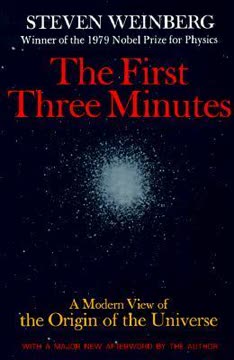
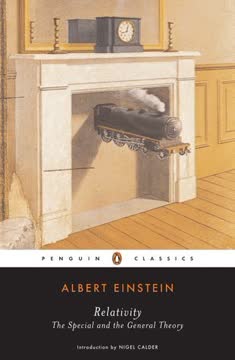


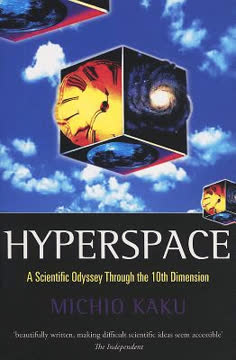
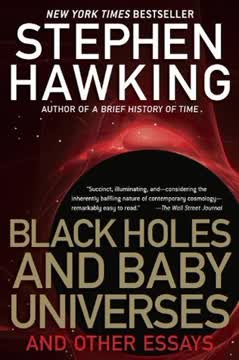


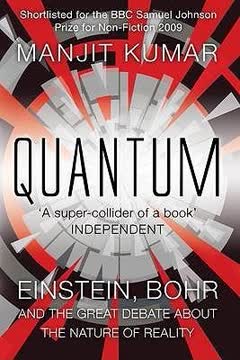

Download PDF
Download EPUB
.epub digital book format is ideal for reading ebooks on phones, tablets, and e-readers.
